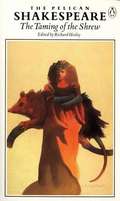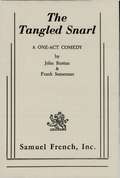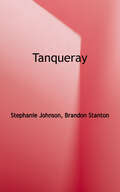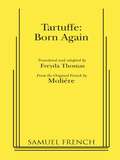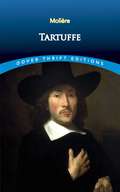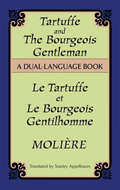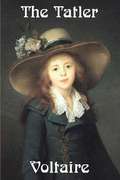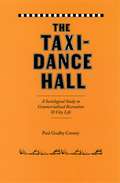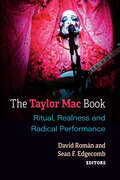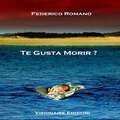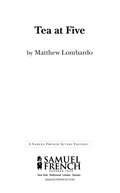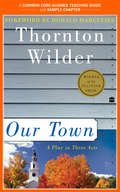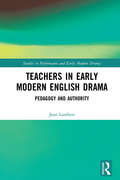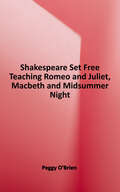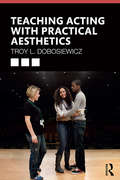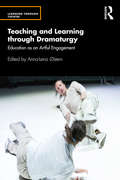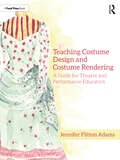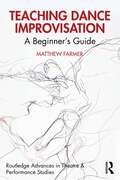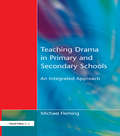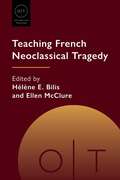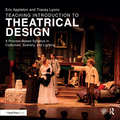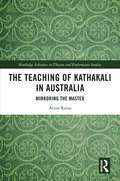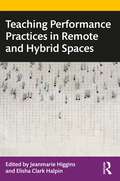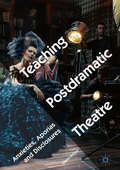- Table View
- List View
The Taming of the Shrew (The Pelican Shakespeare)
by William Shakespeare Richard HosleyShakespeare, who clearly preferred his women characters to his men (always excepting Falstaff and Hamlet), enlarges the human from the start, by subtly suggesting that women have the truer sense of reality.
Tangled Snarl: The Tangled Snarl Ii
by John RustanComedy / 2m, 2f, 1 boy / Interior / To Private Detective Spuds Idaho, life in L.A. is a 24 hour race around a track made of quicksand. When the dying Legs Flamingo leaves him a package to deliver, Spuds gets curious. Why is Leslie Detweiler more interested in the package than in the death of her husband: "Excuse me, but you look pretty collected for a lady whose breadwinner just got sliced four ways." Why was Legs mixed up with mob figure Vito "Fingers" Scampi: "So Fingers had Legs under this thumb." And how did it figure in with the Krieger heist: "The Commissioner was embarrassed. His boys in blue were red in the face." With the aid of his secretary, Ginny, and a wise cracking kid, it all untangles for Spuds Idaho.
Tanqueray
by Stephanie Johnson Brandon Stanton"A deeply touching memoir . . . A beautiful, sometimes shocking NC-17 story, kept out of the lily-white, upper crust canon of literature--until now."" --The Washington Post The storytelling phenomenon Humans of New York and its #1 bestselling books have captivated a global audience of millions with personal narratives that illuminate the human condition. But one story stands apart from the rest... She is a woman as fabulous, unbowed, and irresistible as the city she lives in. Meet TANQUERAY. In 2019, Humans of New York featured a photo of a woman in an outrageous fur coat and hat she made herself. She instantly captured the attention of millions. Her name is Stephanie Johnson, but she's better known to HONY followers as ""Tanqueray,"" a born performer who was once one of the best-known burlesque dancers in New York City. Reeling from a brutal childhood, immersed in a world of go-go dancers and hustlers, dirty cops and gangsters, Stephanie was determined to become the fiercest thing the city had ever seen. And she succeeded. Real, raw, and unapologetically honest, this is the full story of Tanqueray as told by Brandon Stanton--a book filled with never-before-told stories of Tanqueray's struggles and triumphs through good times and bad, personal photos from her own collection, and glimpses of New York City from back in the day when the name "Tanqueray" was on everyone's lips."
Tartuffe: Born Again
by MoliereThis modern adaptation casts Tartuffe as a deposed televangelist who rooks Orgon and his family of their money and property and nearly compromises Orgon's wife. The action takes place in a religious television studio in Baton Rouge where the characters cavort to either prevent or aid Tartuffe in his machinations. Written in modern verse, Tartuffe: Born Again adheres closely to the structure and form of the original. Moliere's legendary comedic characters are delightfully at home in this modern day version that played at New York's Circle in the Square.
Tartuffe: Les Précieuses Ridicules, George Dandin... (Dover Thrift Editions: Plays)
by MolièreRenowned for his satirical works, Molière (Jean-Baptiste Poquelin, 1622–1673) delighted in lampooning the social pretensions and conceits of 17th-century French society. In this 1664 verse comedy with serious overtones, Tartuffe, a penniless scoundrel and religious poseur, is invited by a gullible benefactor to live in his home.Imposing a rigidly puritanical regimen on the formerly happy household, Tartuffe wreaks havoc among family members. He breaks off the daughter's engagement, attempts to seduce the wife of his host, acquires his patron's property, and eventually resorts to blackmail and extortion. But ultimately, his schemes and malicious deeds lead to his own downfall.Attacked by the Church and twice suppressed, Tartuffe opened to packed houses in 1669. Teeming with lively humor and satirical plot devices, this timeless comedy by one of France's greatest and most influential playwrights is essential reading for students of theater and literature.
Tartuffe and the Bourgeois Gentleman: A Dual-Language Book
by MolièreOften called the "Father of French Comedy," Molière (Jean-Baptiste Poquelin, 1622-1673) was a master at exposing the foibles and complexities of humanity in plays notable for their dramatic construction, varied and diverse humor, and subtlety of psychological observation. This convenient dual-language volume contains the original French texts and English translations of two of Molière's most praised and popular comedies: Tartuffe and The Bourgeois Gentleman. These timeless theatrical works by one of France's greatest and most influential playwrights can be appreciated not only by students of French language and literature but by any aficionado of classic comedy.Tartuffe, a 1664 verse comedy with serious overtones, concerns a scoundrel who impersonates a holy man in order to acquire his gullible host's property and wife. The prose farce The Bourgeois Gentleman, an instant success at its 1670 debut, lampoons the hypocrisy of 17th-century Parisian society with a central character who attempts to adopt the superficial manners, accomplishments, and speech associated with the nobility. Both plays abound in humor, the quips of saucy servants, and a host of satirical plot devices.For this edition, Stanley Appelbaum has provided an informative introduction to the playwright and the plays, and excellent literal English translations on facing pages, offering students an ideal opportunity both to refine their French-language skills and to enjoy Molière in his own words.
Tartuffe or the Hypocrite
by Molière Curtis Hidden PageTartuffe a "man of God" uses his connections to swindle his generous host Orgon out of his wealth and his wife. [This text is listed as an example that meets Common Core Standards in English language arts in grades 11-12 at http://www.corestandards.org.]
The Tatler
by VoltaireDon't imagine, my dear, that, by what I'm going to say, I mean to exercise the authority of a mother, always ready as you know I am, to listen in my turn to your reasons when I think them good; my intention is not to lay my commands on you, but to give you my advice; it is my heart which speaks to you, and that experience I have had in the world makes me foresee evils which I would endeavor to prevent: you have been at court, I think, not above two months; believe me, 'tis a dangerous situation: the perfidious group of courtiers always look on a new-comer with an eye of malevolence, and soon find out all his imperfections: from the first moment, they condemn him, without pity or remorse; and, which is still worse, their judgment is irrevocable: be guarded against their malice: on the first step we take in life, the rest of it must in a great measure depend: if you once make yourself ridiculous, the world will think you always so: the impression will remain: it is in vain, as you advance in years, to change your conduct, and assume a more serious behavior: you will suffer a long time from old prejudices: even if we do grow better, we are still suspected; and I have often known men pay dearly in their old age for the errors of their youth: have a little regard therefore to the world, and remember you ought to live now more for that than for yourself. Wilder Publications is a green publisher. All of our books are printed to order. This reduces waste and helps us keep prices low while greatly reducing our impact on the environment.
The Taxi-Dance Hall: A Sociological Study in Commercialized Recreation and City Life
by Cressey Paul G.First published in 1932, The Taxi-Dance Hall is Paul Goalby Cressey’s fascinating study of Chicago’s urban nightlife—as seen through the eyes of the patrons, owners, and dancers-for-hire who frequented the city’s notoriously seedy “taxi-dance” halls. Taxi-dance halls, as the introduction notes, were social centers where men could come and pay to dance with “a bevy of pretty, vivacious, and often mercenary” women. Ten cents per dance was the usual fee, with half the proceeds going to the dancer and the other half to the owner of the taxi-hall. Cressey’s study includes detailed maps of the taxi-dance districts, illuminating interviews with dancers, patrons, and owners, and vivid analyses of local attempts to reform the taxi-dance hall and its attendees. Cressey’s study reveals these halls to be the distinctive urban consequence of tensions between a young, diverse, and economically independent population at odds with the restrictive regulations of Prohibition America. Thick with sexual vice, ethnic clashes, and powerful undercurrents of class, The Taxi-Dance Hall is a landmark example of Chicago sociology, perfect for scholars and history buffs alike.
The Taylor Mac Book: Ritual, Realness and Radical Performance (Triangulations: Lesbian/Gay/Queer Theater/Drama/Performance)
by David Roman Sean EdgecombThis is the first book to dedicate critical attention to the work of influential theater-maker Taylor Mac. Mac is particularly celebrated for the historic performance event A 24-Decade History of Popular Music, in which Mac, in fantastical costumes designed by collaborator Machine Dazzle, sang the history of the United States for 24 straight hours in October 2016. The MacArthur Foundation soon thereafter awarded their “genius” award to a “writer, director, actor, singer, and performance artist whose fearlessly experimental works dramatize the power of theater as a space for building community . . . [and who] interacts with the audience to inspire a reconsideration of assumptions about gender, identity, ethnicity, and performance itself.” Featuring essays, interviews, and commentaries by noted critics and artists, the volume examines the vastness of Mac’s theatrical imagination, the singularity of their voice, the inclusiveness of their cultural insights and critiques, and the creativity they display through stylistic and formal qualities and the unorthodoxies of their personal and professional trajectories. Contributors consider the range of Mac’s career as a playwright, performer, actor, and singer, expanding and enriching the conversation on this much-celebrated and deeply resonant body of work.
Te Gusta Morir?
by Federico RomanoDoce historias en primera y tercera persona, los personajes se mueven a lo largo de un hilo intentando mantener el equilibrio entre la fantasía y la realidad.
Tea at Five: [a Play]
by Matthew Lombardo1f / Biographical monologue / Tea at Five captures the fiery spirit of Katherine Hepburn in a one-woman show that recounts her journey from a well-heeled Yankee childhood to winner of four Oscars. Ensconced at her beloved Fenwick home, Ms. Hepburn reflects on the dizzying heights and emotional lows of her upbringing, her adventures in show business and her heartbreaking romance with Spencer Tracy. Audiences leave with new memories of one of the most dearly loved ladies of an era.
A Teacher's Guide to Our Town
by Thornton Wilder Amy JurskisFor teachers We know that the Common Core State Standards are encouraging you to reevaluate the books that you assign to your students. To help you decide which books are right for your classroom, each free ebook in this series contains a Common Core-aligned teaching guide and a sample chapter.This free teaching guide for Our Town by Thornton Wilder is designed to help you put the new Common Core State Standards into practice."Taking as his material three periods in the history of a placid New Hampshire town, Mr. Wilder has transmuted the simple events of human life into universal reverie. He has given familiar facts a deeply moving, philosophical perspective. . . . Our Town is one of the finest achievements of the current stage."--Brooks Atkinson Our Town was first produced and published in 1938 to wide acclaim. This Pulitzer Prize-winning drama of life in the town of Grover 's Corners, an allegorical representation of all life, has become a classic. It is Thornton Wilder's most renowned and most frequently performed play.
Teachers in Early Modern English Drama: Pedagogy and Authority (Studies in Performance and Early Modern Drama)
by Jean LambertStarting from the early modern presumption of the incorporation of role with authority, Jean Lambert explores male teachers as representing and engaging with types of authority in English plays and dramatic entertainments by Shakespeare and his contemporaries from the late sixteenth to the early seventeenth century. This book examines these theatricalized portraits in terms of how they inflect aspects of humanist educational culture and analyzes those ideas and practices of humanist pedagogy that carry implications for the traditional foundations of authority. Teachers in Early Modern English Drama is a fascinating study through two centuries of teaching Shakespeare and his contemporaries and will be a valuable resource for undergraduates, postgraduates, and scholars interested in sixteenth- and seventeenth-century drama, writing, and culture.
Teaching a Midsummer Night's Dream, Romeo and Juliet, and Macbeth: Shakespeare Set Free (Folger Shakespeare Library)
by Peggy O'BrienThe Folger Shakespeare Library, the nation's most important center for Shakespeare study and scholarship, is also the center for Shakespeare education. At the Library's Teaching Shakespeare Institute, scholars, actors, and teachers from across the country work together in the business of teaching and learning Shakespeare. This volume of the Shakespeare Set Free series is written by institute faculty and participants and includes the latest developments in recent scholarship. It bristles with the energy created by teaching and learning Shakespeare from the text and through active performance and reflects the experience, wisdom, and wit of real classroom teachers in schools and colleges throughout the United States. In this book, you will find the following:-Clearly written essays by leading scholars to refresh teachers and challenge older students -Michael Tolaydo’s brilliant and accessible technique for classroom teaching through performance -Day-by-day teaching strategies that successfully and energetically immerse students in every grade and skill level in the language and the plays themselves – created, taught, and written by real teachers.
Teaching Acting with Practical Aesthetics
by Troy DobosiewiczTeaching Acting with Practical Aesthetics uses constructivist pedagogy to teach acting via Practical Aesthetics, a system of actor training created in the mid-1980s by David Mamet. The book melds the history of Practical Aesthetics, Practical Aesthetics itself, educational theory, and compatible physical work into the educational approach called Praxis to create a comprehensive training guide for the modern actor and theatre instructor. It includes lesson plans, compatible voice and movement exercises, constructivist teaching materials, classroom handouts, and a suggested calendar for Acting courses. Written for Acting instructors at the college and secondary levels, Acting scholars, and professionals looking for a new way to perform, Teaching Acting with Practical Aesthetics offers detailed instructions to help students sharpen their performing skills and excel on stage.
Teaching and Learning through Dramaturgy: Education as an Artful Engagement (Learning Through Theatre)
by Anna-Lena ØsternThe aim of this book is to contribute a dramaturgical perspective to education. The authors write from a dramaturgical perspective about the planning of teaching, leadership in the classroom, the teacher-body, the teacher’s oral skills and ethics, communication, and about the spaces in which teaching takes place. The book is written with the pre-understanding that the ways in which art creates knowledge need to be illuminated and articulated more clearly in educational thinking, thereby enhancing artful engagement in education. Dramaturgical perspectives are presented as such a way – a form of knowledge that the artform of drama/theatre can contribute to teaching and learning in general. Through examples and analyses of empirical material, as well as through theoretical perspectives, the authors show chapter by chapter how dramaturgy and a dramaturgically inspired language and concepts create more possibilities of choice for teachers in planning and carrying out their teaching. Teaching and Learning through Dramaturgy brings to the forefront what will be enabled in teaching and planning of teaching, by making use of a dramaturgically inspired language and action, what in principle is possible in every subject.
Teaching Costume Design and Costume Rendering: A Guide for Theatre and Performance Educators
by Jennifer Flitton AdamsTeaching Costume Design and Costume Rendering: A Guide for Theatre and Performance Educators clarifies the teaching process for Costume Design and Costume Rendering courses and offers a clear and tested path to success in the classroom. Drawing on the knowledge and experience of the author’s twenty-five years of teaching as well as many decades of work by multiple other educators, this book provides a clear roadmap for teaching these two popular Theatre courses. It includes information on pedagogical theory, creating syllabi, preparing and structuring classes, crafting lectures, and analyzing students’ work, with a heavy focus on specific teaching projects that have been proven to work in the classroom. All aspects of teaching costume design and rendering are considered, including body awareness, cultural sensitivities, script analysis, elements and principles of design, psychology of dress, choosing fabrics, period styling, and requirements of dance costumes. Included in the appendices are sample syllabi, and additional reading and research resources. Teaching Costume Design and Costume Rendering is a guide for theatre and performance educators ranging from secondary education to undergraduate programs and graduate studies. It is a valuable resource both for costume educators approaching costume design and rendering classes for the first time and for experienced instructors looking for new material for these courses.
Teaching Dance Improvisation: A Beginner's Guide (ISSN)
by Matthew FarmerTeaching Dance Improvisation serves as an introduction to, and a springboard for the author’s theories, practices, and curriculum building of dance improvisation as a technique. By taking a similar approach to teaching ballet, modern, jazz, tap, or hip hop, this book supplies its reader with an easy-to-follow roadmap in order to begin building and incorporating dance improvisation into dance studios/classrooms and curriculums.
Teaching Drama in Primary and Secondary Schools: An Integrated Approach
by Michael FlemingThis book will be of major interest to student teachers, teachers, lecturers and researchers. It provides a case for an integrated approach to the teaching of drama in primary and secondary schools that will help practitioners develop a theoretical rationale for their work. It also offers practical examples of lesson plans and schemes of work designed to give pupils a broad and balanced experience of drama. These are presented within a framework that argues for an integration of content and form, means and ends, and internal and external experience.Whereas the author's previous work argued for an inclusive approach that reconciled polarized views about performance drama and improvisation, this book shows how those activities can be related to each other in practice in an integrated curriculum.
Teaching French Neoclassical Tragedy (Options for Teaching #55)
by Hélène E. Bilis and Ellen McClureTragedy has been reborn many times since antiquity. Seventeenth-century French playwrights composed tragedies marked by neoclassical aesthetics and the divine-right absolutism of the Grand Siècle. But their works also speak to the modern imagination, inspiring reactions from Barthes, Derrida, and Foucault; adaptations and reworkings by Césaire and Kushner; and new productions by francophone and anglophone directors.This volume addresses both the history of French neoclassical tragedy--its audiences, performance practice, and development as a genre--and the ideas these works raise, such as necessity, free will, desire, power, and moral behavior in the face of limited choices. Essays demonstrate ways to teach the plays through a variety of lenses, such as performance, spectatorship, aesthetics, rhetoric, and affect. The book also explores postcolonial engagement, by writers and directors both in and outside France, with these works.
Teaching Introduction to Theatrical Design: A Process Based Syllabus in Costumes, Scenery, and Lighting
by Eric Appleton Tracey LyonsTeaching Introduction to Theatrical Design is a week-by-week guide that helps instructors who are new to teaching design, teaching outside of their fields of expertise, or looking for better ways to integrate and encourage non-designers in the design classroom. This book provides a syllabus to teach foundational theatrical design by illustrating process and application of the principals of design in costumes, sets, lights, and sound.
The Teaching of Kathakali in Australia: Mirroring the Master (Routledge Advances in Theatre & Performance Studies)
by Arjun RainaThis book tells the story of teaching Kathakali, a seventeenth century Indian dance-drama, to contemporary performers in Australia. A rigorous analysis and detailed documentation of the teaching of multiple learners in Melbourne, both in the group workshop mode and one-on-one, combined with the author’s ethnographic research in India, leads to a unique insight into what the author argues persuasively is at the heart of the art’s aesthetic- a practical realisation of the theory of rasa as first articulated in the ancient Sanskrit treatise on drama The Natyashastra. The research references the latest discoveries in neuroscience on ‘mirror neurons’ and argues for a reconceptualization of Kathakali’s imitative methodology, advancing it from the reductive category of ‘mimicry’ to a more contemporary and complex mirroring which is where its value lies in Australian actor performer training. The Teaching of Kathakali in Australia will be of great interest to students and scholars of theatre and dance, intercultural actor training, practice-led research, and interdisciplinary studies of neuroscience and performance.
Teaching Performance Practices in Remote and Hybrid Spaces
by Jeanmarie HigginsThis collection of insightful essays gives teachers’ perspectives on the role of space and presence in teaching performance. It explores how the demand for remote teaching can be met while at the same time successfully educating and working compassionately in this most ‘live’ of disciplines. Teaching Performance Practices in Remote and Hybrid Spaces reframes prevailing ideas about pedagogy in dance, theatre, and somatics and applies them to teaching in face-to-face, hybrid, and remote situations. Case studies from instructors and professors provide essential, practical suggestions for remotely teaching a vast range of studio courses, including tap dance, theatre design, movement, script analysis, and acting, rendering this book an invaluable resource. The challenges that teachers are facing in the early twenty-first century are addressed throughout, helping readers to navigate these unprecedented circumstances whilst delivering lessons, guiding workshops, rehearsing, or even staging performances. This book is invaluable for dance and theatre teachers or leaders who work in the performing arts and related disciplines. It is also ideal for any professionals who need research-based solutions for teaching performance online.
Teaching Postdramatic Theatre: Anxieties, Aporias and Disclosures
by Glenn D’CruzThis book explores the concept and vocabulary of postdramatic theatre from a pedagogical perspective. It identifies some of the major anxieties and paradoxes generated by teaching postdramatic theatre through practice, with reference to the aesthetic, cultural and institutional pressures that shape teaching practices. It also presents a series of case studies that identify the pedagogical fault lines that expose the power-relations inherent in teaching (with a focus on the higher education sector as opposed to actor training institutions). It uses auto-ethnography, performance analysis and critical theory to assist university teachers involved in directing theatre productions to deepen their understanding of the concept of postdramatic theatre.
